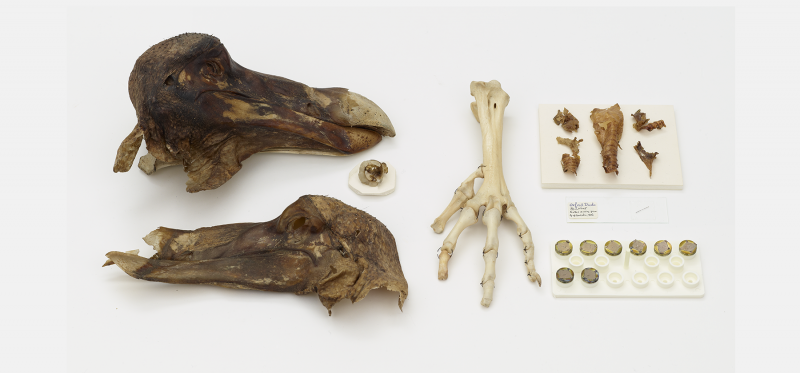This museum holds the only remaining soft tissue of the dodo known anywhere in the world. The skin of the head and foot scales on this unique specimen formed part of the founding collections of the Oxford University museums in the 17th century.
Although it is now an icon of extinction, it wasn’t until the 19th century that interest in the Oxford Dodo grew from scientific publications about the extinction of the species from the island of Mauritius in the Indian Ocean, where they were endemic.

The mummified skin from the head of the Oxford Dodo represents the only surviving soft tissue available for DNA research – a cast is on display
In response to this rising interest John Duncan, Keeper of the Ashmolean Museum in Oxford – which held the dodo material at the time – commissioned a number of plaster casts of the head to share and exchange with other museums.
Early casts were presented to the British Museum in 1828; to Henri Marie Ducrotay de Blainville, one of the leading anatomists at the time, in 1835; and to Leiden Museum in 1837.
From these early exchanges and later casts – and then the sharing of casts of casts and models – virtually every major natural history museum in the world ended up with its own dodo head, helping to make the dodo the symbol of extinction that it is today.
The casts and model on display here are just some of those held by the Museum. The original head is not on display due to the fragility of the heavily studied specimen.